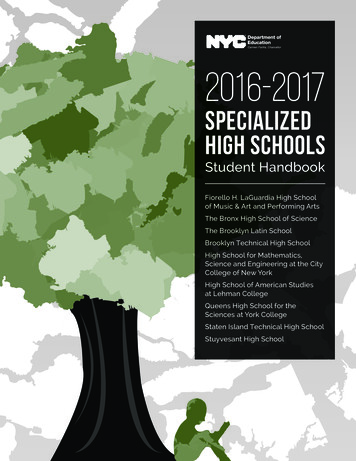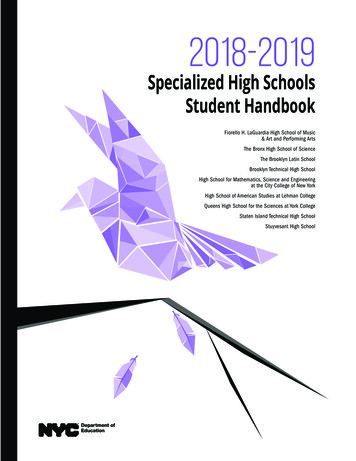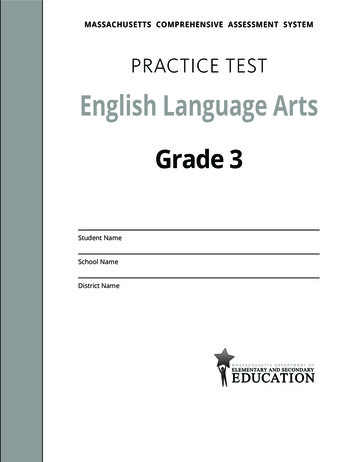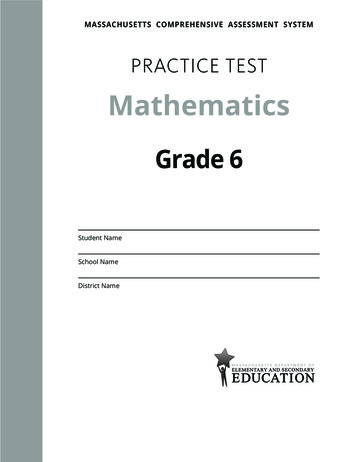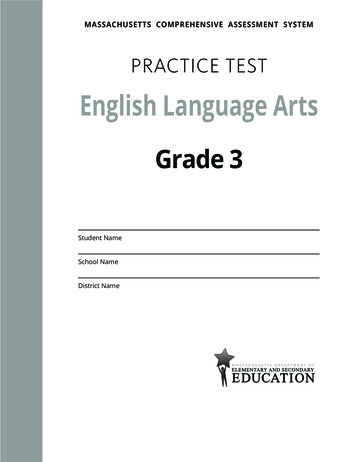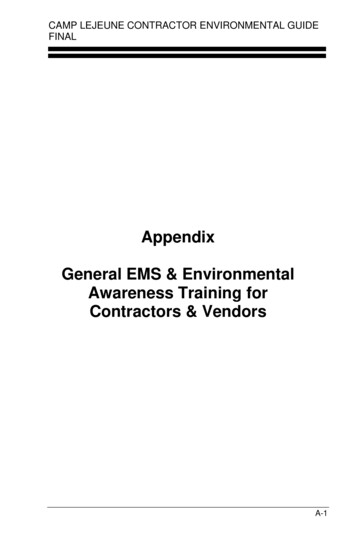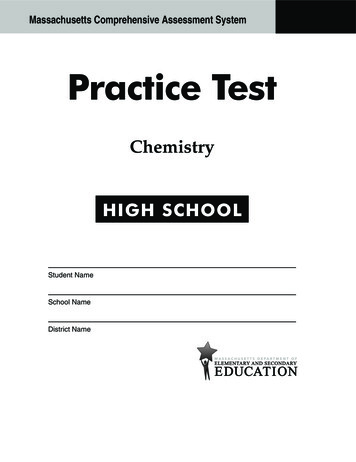
Transcription
Massachusetts Comprehensive Assessment SystemPractice TestChemistryHIGH SCHOOLStudent NameSchool NameDistrict Name
This is a practice test. Your responses to practice test questions must be recorded on yourPractice Test Answer Document.Mark only one answer for each multiple-choice question. If you are not sure of the answer,choose the answer you think is best.HOW TO ANSWEROPEN-RESPONSE QUESTIONS Read all parts of each question carefully. Make each response as clear, complete,and accurate as you can. Support your responses. Check your answers.
ChemistryDIRECTIONSThis practice test contains two multiple-choice questions and one open-response question. Markyour answers to these questions in the spaces provided on page 4 of your Practice Test AnswerDocument.1 2 A cylinder of gas particles is shownbelow.The correct name for an aqueoussolution of HCl isA. chloric acid.B. chlorous acid.C. hydrochloric acid.D. hydrogen chloride.The cylinder is fitted with a moveablepiston that can be raised and lowered.Which of the following would result inan increase in the pressure of the gasbelow the piston?A. increasing the volume of thecylinderB. removing some of the gas from thecylinderC. decreasing the volume of thecylinderD. decreasing the pressure outside thecylinder1Go On
Chemistry ChemistryQuestion 3 is an open-response question. BE SURE TO ANSWER AND LABEL ALL PARTS OF THE QUESTION. Show all your work (diagrams, tables, or computations) in your Practice Test AnswerDocument. If you do the work in your head, explain in writing how you did the work.Write your answer to question 3 in the space provided on page 4 of your Practice Test AnswerDocument.3 Several chemists examined a pure, unknown substance and observed and measured its physicalproperties. Their results are shown below.Unknown SubstancePhysical PropertyDescription or ValueColorClear and colorlessFlammabilityOdorNoneSweet, distinctive odorMelting point–22.9ºCBoiling point76.74º CDensity at 20º C1.585 g/cm3Water solubilityat 20ºC0.08 g/100 g H2OBased on the data recorded in the table, answer the following.a. What is the physical state of this substance at room temperature? Explain how theinformation in the table is used to make this classification of the substance’s state.b. The substance is unreactive in water. What will happen if 10.0 g of this substance is addedto 200.0 g of water at 20 C and standard pressure? Explain your response. Show yourcalculations and include units in your answer.2STOP!
MASSACHUSETTS COMPREHENSIVE ASSESSMENT SYSTEMHigh School ChemistryPractice Test Answer DocumentSchool Name:District Name:Last Name of Student:First Name of Student:Marking Instructions Use a No. 2 pencil only.Do not use ink, ballpoint, or felt tip pens.Make solid marks that fill the circles completely.Erase cleanly any marks you wish to change.Make no stray marks on this form.Do not fold, tear, or mutilate this form.
CHEMISTRYA B C D1. \\\\A B C D2. \\\\3.4STOP!
NO TEST MATERIALON THIS PAGE
Chemistry 1 Go On DIRECTIONS This practice test contains two multiple-choice questions and one open-response question. Mark your answers to these questions in the spaces provided on page 4 of your Practice Test Answer Document. 1 A cylinder of gas particl
